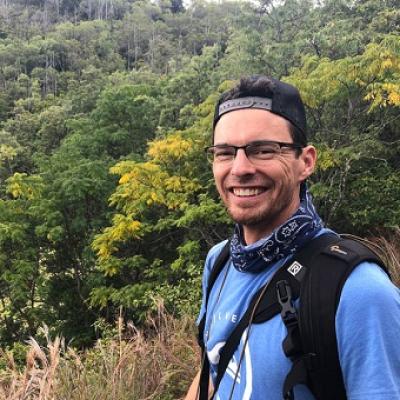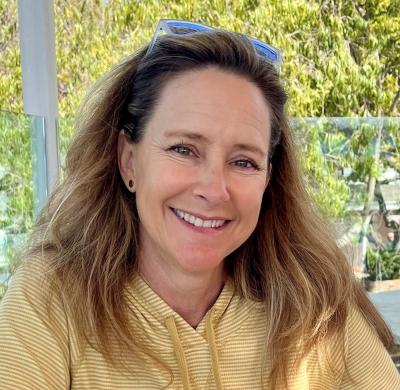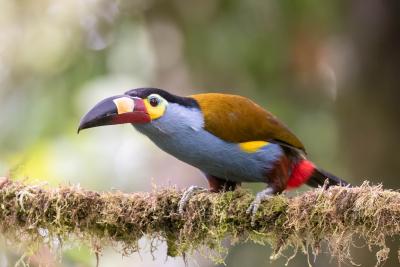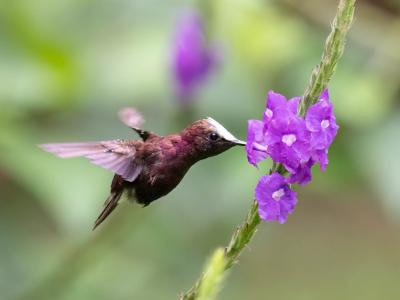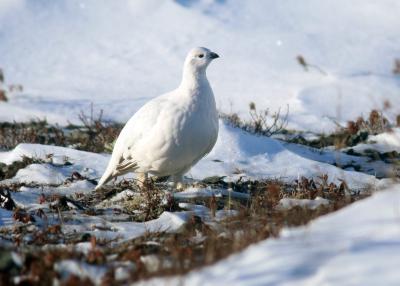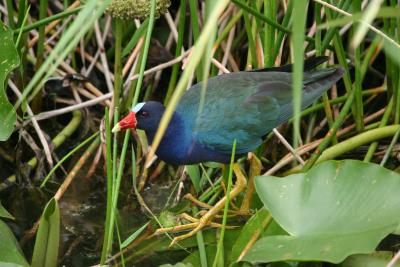Maine and New Hampshire
From Bicknell's Thrush to Atlantic Puffin
-
Jun 2-11, 2025
Scott Olmstead
This tour visits one of the most beautiful and sparsely populated areas in North America near the peak of breeding bird activity. Maine and New Hampshire are an avifaunal crossroads, as many species reach their northernmost or southernmost breeding ranges here. We’ll spend time with both of these groups, focusing on the boreal specialties that are mostly found farther north.
Off the coast, tiny rock islands teem with life as thousands of seabirds begin their nesting season. During our visit to Machias Seal Island, we’ll see terns and alcids, including Razorbill and Atlantic Puffins, literally at arm’s length.
In all, we hope to see at least 20 species of warbler, thirteen sparrows, nine flycatchers, seven thrushes including Bicknell’s, five vireos and four alcids. Although the avian spectacle is reason enough to visit New England, the rugged coastline, picturesque lighthouses, quaint fishing towns, classic New England villages, tallest mountains in the Northeast, and excellent cuisine (the lobster doesn’t get any fresher than this!) are a significant part of the tour.
Day 1: The tour begins at 6:00 p.m. in South Portland. Night in South Portland.
Day 2: We’ll begin at Scarborough Marsh, the largest salt marsh north of Massachusetts and well known for its healthy population of both Nelson’s and Saltmarsh Sparrows. In addition to studying the differences between the two “sharp-tailed” (and hybrids thereof) sparrows, we’ll search for other marsh and coastal species, including herons, “Eastern” Willet, Roseate and Least Terns, Piping Plover, and lingering spring or early fall migrants. We’ll have some flexibility today, giving us the opportunity to change course for lingering shorebirds and waterbirds and for possible rarities, while seeking more southern Maine species, from Fish Crows to Blue-gray Gnatcatchers. We’ll probably start our indulgence in lobster at some point today as well. Night in South Portland.
Day 3: Our first stop will be the Kennebunk Plains, the largest remaining area of sand-plain grassland in New England and home to sparrows such as Grasshopper, Vesper, Field, and perhaps Clay-colored, as well as Upland Sandpiper and Prairie Warbler.
We’ll then have some flexible time to play clean-up on and near the coast before heading north towards Bar Harbor. We’ll visit Messalonskee Lake, which hosts a Black Tern colony and one of the few Purple Martin colonies remaining in the state. We’ll look for Sandhill Crane and other marsh denizens as well. We’ll then head further “Downeast”, ending up in Bar Harbor for the night.
Day 4: After savoring some famous blueberry pancakes, we’ll board a boat for Petit Manan, part of the Maine Coastal Islands National Wildlife Refuge. Atlantic Puffins, Razorbills, Common Murres, Black Guillemots, and Common, Arctic, and Roseate Terns can all be seen here, a useful backup (front-up?) if our Machias Seal Island day is scrubbed for bad weather. After we’ve had our fill, we’ll explore the nooks and crannies of Frenchman’s Bay, with Osprey, Bald Eagles, and more Black Guillemots to keep us company.
After a delicious lunch at the iconic Jordan Pond House, we’ll likely visit a few local birding patches as well as the summit of Cadillac Mountain, where we’ll take in the stunning landscapes of Mount Desert Island. Night in Bar Harbor.
Day 5: We’ll continue our time in Acadia National Park at the gardens of Sieur de Monts, where we’ll brush up on our New England botany and on our deciduous forest warblers. This can be a good spot to search for Blackburnian Warbler, Barred Owl, Winter Wren, Alder Flycatcher, and a host of other species. The Park Loop Road takes us through postcard-worthy scenery and should also yield Peregrine Falcons and such deciduous-loving passerines as Black-throated Blue Warbler and Wood Thrush. We’ll start heading north mid-morning, probably with a stop at the Hollingsworth Trail for our first chance at Spruce Grouse, and lunch in the town of Millbridge. We’ll stop at the blueberry barrens in Columbia Falls to look for Upland Sandpiper before making it to Machias in the afternoon.
Day 6: They don’t call this the Bold Coast for nothing, and this marvelous region will provide some of the trip’s biggest prizes. Depending on our boat’s departure time (this may change based on tides and weather), we may do some morning birding to search of Spruce Grouse (if needed), among other species. We’ll then meet up with our captain for a one-hour boat ride to the legendary Machias Seal Island. If we’re very lucky and the sea conditions are calm enough, we’ll even get the chance to land here and walk on raised pathways to blinds, where we’ll find ourselves face to beak with Atlantic Puffins, Common Murres, and Razorbills. After several years absence, Arctic and Common Terns are recolonizing the island. Even if we can’t land, our small boat will circle the island and get us amazing close-up views of all the alcids. It should be a day to remember!
Depending on our return time, we may visit West Quoddy Head State Park, the easternmost point in the United States and home to Palm Warbler, Lincoln’s Sparrow, and perhaps a lingering Great Cormorant. Night in Machias.
Day 7: If we haven’t yet encountered a Spruce Grouse, we’ll focus on that this morning. Depending on our other needs, we may return to Quoddy Head State Park or other Bold Coast locales, or possibly the Lubec mudflats—which are extensive, as the tide here is more than 15 feet—for lingering shorebirds and more Nelson’s Sparrows. We’ll likely then head to Moosehorn National Wildlife Refuge in search of Bay-breasted and perhaps Cape May Warblers. Other short stops around Lubec and Machias will help us find any missing boreal specialties before we embark on the long drive west. Night in Rangeley.
Day 8: Our primary destination in the Rangeley area is the famous “Boy Scout Road,” a flat dirt road that passes through fine boreal and riparian habitat. We’ll look especially for Canada Jay and Yellow-bellied, Olive-sided, and Alder Flycatchers, along with a variety of warblers. We’ll likely explore a number of other small “hotspots” as we head west into New Hampshire.
After an early dinner we’ll head uphill on our special after-hours charter up the Mount Washington Auto Road in order to enter the realm of Bicknell’s Thrush. If time permits, we’ll visit the summit of Mount Washington for breeding American Pipits and take in the sunset from the “windiest place on earth.” Night in Gorham, New Hampshire.
Day 9: In the morning we’ll visit a number of locations around the White Mountain National Forest for local breeders such as Philadelphia Vireo. We’ll likely take another trip to see Bicknell’s Thrush (unless we had unbeatable views the night before), weather permitting, and likely via a sky tram up another mountain with a short walk once at the summit. After a picnic lunch, we’ll return to Portland, making a stop at Brownfield Bog on the way. This may give us the opportunity to fill some gaps on our list, with targets including Willow Flycatcher, Yellow-throated Vireo, both cuckoos, and various other wetland and edge birds. Night in South Portland.
Day 10: The tour concludes this morning in South Portland.
Note: The information presented here is an abbreviated version of our formal General Information for this tour. Its purpose is solely to give readers a sense of what might be involved if they take this tour. Although we do our best to make sure taht what follows here is completely accurate, it should not be used as a replacement for the formal document which will be sent to all tour registrants, and whose contents supersedes any information contained here.
ENTERING THE UNITED STATES: Non-U.S. citizens will need a valid passport and may need a tourist visa. Consult your nearest U.S. Embassy or consulate for details. Canadian citizens should carry proof of citizenship in the form of a passport or birth certificate.
Note: All participants, will be required to present government issued photo I.D. when we board the craft for our boat trips.
PACE OF THE TOUR: All walking is of short to at most moderate (two hours) duration, with no major climbs. We will take numerous short walks, often many in one day. Some trails will be over uneven surfaces, (with exposed tree roots) but the longer walks are on level surfaces (usually dirt roads). Due to very early sunrise, departure times will sometimes be as early as 4:30 or 5:00 AM in order to capture peak bird activity. However, these will be balanced by afternoon siestas whenever possible.
HEALTH: Birdwatching in New Hampshire and Maine poses no major health hazards.
Altitude: We will reach 6200 feet (briefly) when on the top of Mount Washington.
Insects: Black flies, mosquitoes and deerflies may be locally bothersome, depending on rainfall amounts.
Smoking: Smoking is prohibited in the vehicles or when the group is gathered for meals, checklists, etc. If you are sharing a room with a nonsmoker, please do not smoke in the room. If you smoke in the field, do so well away and downwind from the group. If any location where the group is gathered has a stricter policy than the WINGS policy, that stricter policy will prevail.
CLIMATE: The weather can vary from very warm (80’s) and humid to possibly cool, wet, and very windy at the top of Mount Washington. We could experience cold (40-50’s) and damp weather on boat trips off the Maine coast and just about everything in between. Rain is possible, especially in the White Mountains. Layered clothing and proper rain gear are essential to accommodate a variety of weather conditions.
ACCOMMODATIONS: We will be staying in comfortable, standard motels throughout the trip. Our hotels have reasonably good Wi-Fi connections. Mobile phone access is very good near our lodging locations but can be intermittent when in the field.
FOOD: We’ll dine in local restaurants where the food is generally American standard except in Maine where lobster and other seafoods are available. Expect several picnic breakfasts and lunches. A few of our favorite lobster restaurants have limited menus, but we will always have food in the cooler to accomodate needs.
Food Allergies / Requirements: We cannot guarantee that all food allergies can be accommodated at every destination. Participants with significant food allergies or special dietary requirements should bring appropriate foods with them for those times when their needs cannot be met. Announced meal times are always approximate depending on how the day unfolds. Participants who need to eat according to a fixed schedule should bring supplemental food. Please contact the WINGS office if you have any questions.
TRANSPORTATION: We will be traveling by 15-passenger window van or minivan, depending on the group size. When using 15-passenger window vans, we will take a maximum of seven passengers plus the leader/driver. Participants should be able to ride in any seat in tour vehicles.
Maine & New Hampshire
2023 Narrative
In Summary
Our tour to Maine and New Hampshire in early June was delightfully birdy and full of delicious seafood. Numbers of biting insects were entirely tolerable and we enjoyed pleasantly cool temperatures, with sun and rain and fog and everything in between. Bird highlights included unseasonal King Eider and Red-necked Grebe, the highly sought-after Bicknell’s Thrush (eventually!), gorgeous Saltmarsh Sparrows (along with Nelson’s and at least one hybrid thereof), lots of warblers (including eye-shattering Bay-breasted, Cape May, Blackburnian, Canada, Palm, Blackpoll, and more…) and of course, breeding seabirds like Atlantic Puffin, Razorbill, and Arctic Tern. We took full advantage of the breadth of habitats in the state, from saltmarshes to blueberry barrens to stunted mountaintop spruces to coastal headlands. It was delightful to spend a week exploring and enjoying the breeding diversity of the region!
In Detail
We started on the coast of southern Maine, where our first morning took us to the Kennebunk Plains and its cast of locally rare breeding birds like Grasshopper and Vesper Sparrows. Several Prairie Warblers and Eastern Towhees also cooperated quite well. We continued checking various coastal spots for the rest of the day, connecting with a couple Roseate Terns at Pine Point (plus unexpected adult Arctic Terns sitting with Commons on the mudflats, rare inshore here) and phenomenal views of adorable Piping Plovers. Perhaps the highlight of the day was the great show from multiple Saltmarsh and Nelson’s Sparrows, plus at least one confusing hybrid. And of course, we had our first taste of Maine lobster for lunch!
Our second day in the “south” started in Wells, where we picked up a Willow Flycatcher just after our picnic breakfast and then had a great walk around Laudholm Farm. Bobolinks were much appreciated, and we teased out a couple glimpses of migrant Yellow-bellied Flycatchers near locally breeding Alders. From here we continued north to Biddeford Pool, where it took a little while to find the star of the show…a lingering male King Eider! Rare here even in winter, but even more surprising in June…and who could ever get sick of male King Eiders no matter where or when? Icing on the cake was a pair of vocalizing Red-necked Grebes, also quite unusual here in summer.
It was then time to drive north towards Bar Harbor, where we dodged some heavy rain but managed to find Sandhill Cranes and Purple Martins at Messalonskee Lake in Belgrade. We pulled into town after a fairly easy drive and enjoyed dinner at Blaze, excited for our boat trip to Petit Manan the next morning…
…well, not so fast. Dense fog meant our boat trip was postponed, but we enjoyed a great day of birding nonetheless. Sieur de Monts Spring produced a great experience with juvenile Barred Owls (one of which spent some time gulping down a Red Squirrel!), plus the most cooperative Winter Wren in the world, a stunning Blackburnian Warbler, an ear-shattering Ovenbird, and a migrant Olive-sided Flycatcher. We headed off-island to the Hollingsworth Trail to try for Spruce Grouse, unsuccessfully, but enjoyed awesome views at several more warblers (Nashville, Black-throated Green, Magnolia, Myrtle, Palm) in stunning habitat. The afternoon was spent atop Cadillac Mountain where the fog cleared just enough to see Frenchman Bay, and a quick stop at some nearby ponds where families of Hooded Merganser and Wood Duck kept us duly entertained.
Our boat trip the next morning went off without hitch, even with some lingering fog…we all were excited to see our first Atlantic Puffins of the trip, plus a few Razorbills! Those who scanned during the trip out were lucky to catch glimpses of Wilson’s Storm-Petrels and a small flock of Red-necked Phalaropes. The dense fog around Petit Manan Island probably cut our time a bit short there, so we cruised around the nooks and crannies of Frenchman Bay, where more Black Guillemots and a Bald Eagle kept us company. After lunch at the iconic Jordan Pond House, we headed further Downeast toward Machias, with a quick stop at some blueberry barrens along the way. I was prepared to spend quite a bit of time searching for Upland Sandpiper here, but I needn’t have worried…they ran across the road just in front of the van, and proceeded to give incredible views just a few meters away. Wow!
Our two nights in Machias are primarily centered around a very special activity…a boat trip to Machias Seal Island, perhaps the pinnacle of the entire tour! This incredible place is home to thousands of pairs of Atlantic Puffins, Razorbills, and Common Murres, plus a growing colony of Arctic Terns. There’s even an adult Northern Gannet hanging around, perhaps prospecting for a future breeding site? We’re always at the mercy of the weather, but we got so lucky with gorgeous sea conditions that allowed us to land and spend time in the blinds, just a few feet away from all these amazing birds. It’s an unforgettable and multi-sensory birding experience, with the sights, sounds, and smells of the colony seared into our memories. Totally awesome.
Other highlights around Machias included breeding Lincoln’s Sparrow and Palm Warbler in a gorgeous bog, a pleasant visit to West Quoddy Head (ironically the easternmost point in the continental U.S.) with Black-legged Kittiwake and Great Cormorant on the rocks, a great pizza dinner in Lubec, and a brazen Cape May Warbler feeding at eye-level at Moosehorn National Wildlife Refuge (plus nearby Bay-breasted and Canada Warblers as supporting cast!)…not to mention the constant backdrop of spruce-studded coastline and Sphagnum-moss-covered forest floors. This special corner of Maine never gets old.
From here we headed all the way across the state to Rangeley, picking up a few remaining species before our grand finale in New Hampshire. Mosquitos and black flies were somewhat more bothersome around here, but we persevered, and had nice encounters with a bedraggled pair of Gray Jays, a super cooperative Northern Waterthrush, amazing views of Yellow-bellied Flycatcher, a brief Black-backed Woodpecker, and an adorable family of Common Merganser. Oh yeah, and two Moose!
Heading into Gorham, New Hampshire, and we were all a bit nervous before heading up Mount Washington. Okay, maybe I was the most nervous…you just never know what the weather gods will give you up here. And everyone really wants to see Bicknell’s Thrush! Well, our time up on the mountain was entirely typical…fog, driving wind, horizontal rain in our faces. Oof. We waited, and waited, and hope was dwindling as distant calls remained frustratingly heard-only…and as the rain pelted us some more. But eventually, finally, there it was…a Bicknell’s Thrush perched up, totally in the open atop a stunted spruce! In the scope for everyone. Phew.
After that truly perfect experience with such a tough bird (I swear, the weather is supposed to be a part of it!), we spent our final day playing cleanup in the White Mountains, with great views of Philadelphia Vireo and Blackpoll Warbler topping the list, and even a few more heard-only Bicknell’s Thrushes. A quick stop at Brownfield Bog on the way back to Portland produced a long scope view of Black-billed Cuckoo, curious Yellow-throated Vireos, and good studies of Warbling Vireos (especially in comparison with the Philadelphia Vireos we saw earlier in the day).
Just like that, we were back in South Portland, enjoying one final dinner. We had a great time exploring the nooks and crannies of Maine (and a bit of New Hampshire), and I’m so grateful for everyone’s good humor, flexibility, and patience. I’m looking forward to crossing paths in the future!
Luke Seitz 2023
I have been very fortunate to tour with Luke Seitz before, and thoroughly enjoy his wonderful friendly enthusiasm, great "ears" and his effort to get each member of the group on each bird. He is really fun to bird with!
- Judi W. on Maine and New Hampshire
Derek is very knowledgable of the area in both the history and finding birds in the field. He never gives up until everyone sees the bird. He uses a laser pointer which is a great help for me. He is very organized, and plans everything very well from getting the most use of time everyday and introducing the group to some fantastic restaurants and other cool food places to stop for breaks. Also gets good yummies for the picnic lunches.
- Terry H. on Maine and New Hampshire
Wow, what a trip! Derek did an absolutely outstanding job in finding the birds, but this trip was so much more than an exercise in checking a list. Derek took the time to explain why the interface between "northern" vs. "southern" birds was so important. He not only discussed, but showed us, the impact of climate change and habitat loss in his home state of Maine. He made us think about our impact as birders and encouraged us to be ambassadors for the hobby. I can honestly say that I've never learned so much in a week.
- Peter P. on Maine and New Hampshire
Not only did Derek find me all the birds I was looking for (and some not expected ones), but he introduced us to Maine culture and ecology, and found us the best food imaginable. Plus he kept us entertain with his great sense of humor along the way. He was patient with all of us, even when we just couldn't seem to get our eyes on a bird everyone else wanted. His passion for finding everybody good looks sometimes made him drive us hard - but with great results. An extremely professional leader.
- Donna M. on Maine and New Hampshire
Maximum group size seven with one leader.








































































